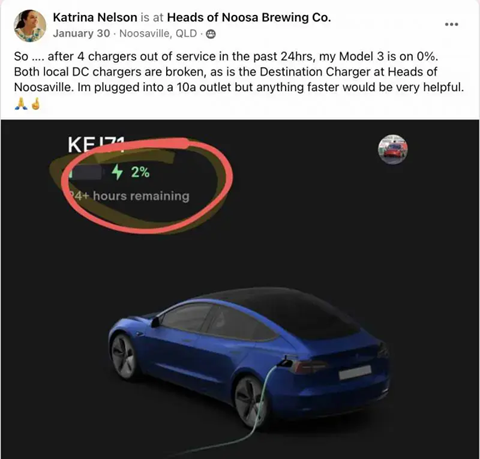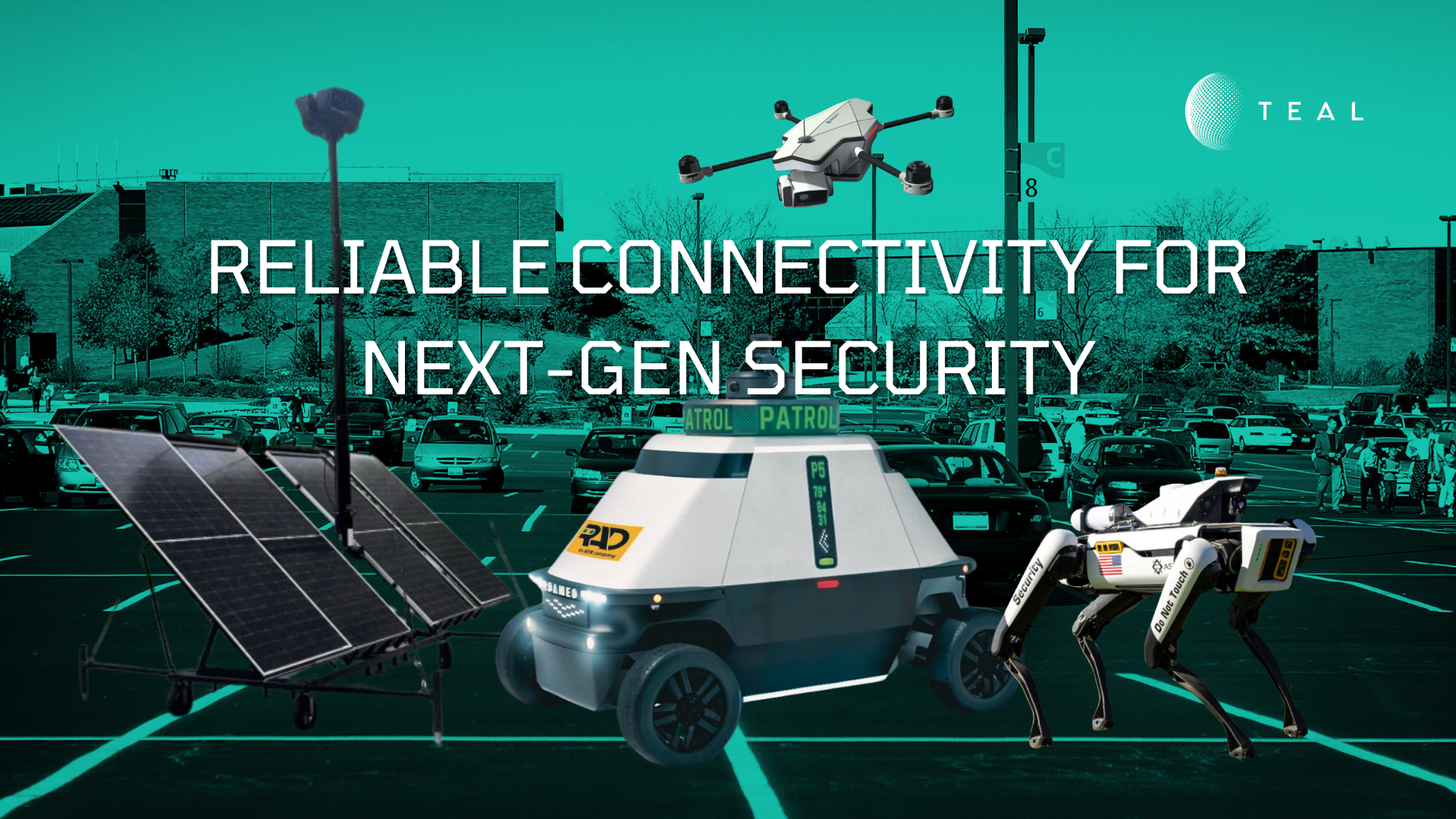Why Reliable Connectivity For EV Charging Infrastructure Is Critical, Especially In Rural Areas

It’s no surprise that electric vehicles (EVs) are the future of transportation. Nearly 22 million EVs are projected to be on US roads by 2030, which represents a 10-fold increase from today.
As a result, the need for EV charging infrastructure has grown exponentially and will continue to rapidly increase throughout the next decade. According to the U.S. Edison Electric Institute, the US will need more than 100,000 EV fast-charging stations and 9.6 million EV chargers (level 1 and level 2 chargers) by 2030 to meet growing demand for EVs.
While the number of EV’s sold in 2020 only accounted for 2% of the U.S automobile market, the number is expected to jump to 52% by 2030. In other words, at the turn of the next decade, one in two new cars sold will require access to EV charging stations.
Despite high expectations for the EV market, one common objection that has limited the growth of EV adoption is “range anxiety”. Range anxiety can be defined as the fear or worry of driving an electric vehicle and running out of power, without being able to find a charging station on time to recharge the battery. So, what happens if someone gets to their destination with a low battery and there is no EV charging station nearby? How does someone justify the purchase of an EV when there isn’t a broad-based EV charging infrastructure in place? Or worse, what if someone makes it to a charging station but it doesn’t work as expected, and they have no way to charge their vehicle?
Lack of access to EV charging stations is a significant barrier to EV adoption. As a result, more cities, and states across the U.S are beginning to set building code parking ordinances that require businesses to install a set number of EV charging spaces to encourage EV adoption. Cities in 10 states have already implemented EV charging building code requirements, including Arizona, California, Washington, Georgia, Hawaii, Massachusetts, New York, Oregon, Florida, and Utah. Orlando became the latest city to pass such an ordinance in August 2021, mandating that 10% of parking spaces at all commercial and industrial developments be EV-capable.
At the Federal level, the Biden Administration recently announced that the government is committing $7.5 billion to fund a national public charging network across America’s highways and in communities. Of the $7.5 billion in funding, around $5 billion has been set aside by Congress to be doled out to states over the next five years for an EV charging network across the country. The Bipartisan Infrastructure Law also provides $2.5 billion in competitive grants to support community and corridor charging, improve local air quality, and increase EV charging access in underserved and overburdened communities. Additionally, President Biden also recently announced the approval of the first $900 million in funding to build electric vehicle charging stations in 35 states as part of the $1 trillion infrastructure bill.
Drivers everywhere have a growing need for accessible, easy-to-use, and conveniently located EV charging stations that work. So, how can EV infrastructure operators ensure that charging stations are available for drivers? When it comes to EV charging infrastructure, robust network connectivity is an important factor in keeping charging stations up-and-running.
Unfortunately, we still have a long way to go as it doesn’t take long to find evidence of malfunctioning charging stations. “If we want to see E.V. adoption continue to ramp up, as I do, we need to solve this problem,” said Joel Levin, the executive director of Plug In America. If you were to scroll through the comments on PlugShare, you would find reports of EV charging stations that refuse payment, abort mid-session, or are disabled by vandals. As an example, about 23% of public electric vehicle charging stations in the San Francisco Bay Area don’t work, according to this study. With nearly 10 million chargers needed by 2030, having millions that don’t work presents a major problem.

Ensuring That EV Charging Infrastructure Is There When You Need It
To stay on top of the massive maintenance challenge of keeping chargers up and running, connectivity is a hard requirement for charging infrastructure everywhere. Being able to send a notification when maintenance is needed is just one of the important data points that matters when it comes to EV charging infrastructure. Chargers must be connected to accept and process various forms of payment. They must be connected to collect the charging and energy consumption data, and they must be connected to indicate on widely used maps whether they are in service or not.
Data Consumption & Payment Transactions
Connected EV charging stations can generate real-time insights and report valuable operational data including charging usage stats, basic error reports, payment processing, billing, and frequency of charging by driver. Effective real-time monitoring and data management around the charging station is also vital to optimize energy consumption.
Data collected from “smart charging,” in which the EV charger communicates with the vehicle, can be utilized to optimize the consumption of the available energy capacity across active charging stations.
On top of this, as more and more EV charging stations are placed throughout the world due to the surge in EV adoption, EV charging operators will be able to track consumer trends and collect real-time data to better understand consumer behavior. For example, if an EV charging station takes too long to charge a vehicle, this may result in a negative experience, leading to a loss of business. But, armed with this data, EV providers can take action, meet consumer needs and deliver a positive experience that wins back the business.
Ensuring that there is a reliable network connection between an EV charging station and cellular data networks is crucial. Not only does poor – or even average – connectivity reduce customer usage of an EV charger, but it can also lead to a loss in revenue when payments fail to process.
Consumers today have high expectations and expect their everyday needs to be addressed quickly and seamlessly; especially when it comes to payment transactions. If an EV charging station takes too long to establish a network connection in order for a customer to make a payment, it can result in downtime, a decrease in the frequency of customers, lost revenue, and a bad customer experience.
To make best use of this data, how does an EV provider ensure its EV charging infrastructure is always reliably connected to the best network? How can charging stations in rural and remote areas stay connected?
The Connectivity Solution You’ve Been Waiting For
WiFi is not ideal for connecting EV charging stations (especially in rural and hard to reach areas) because of short range coverage, unexpected network outages, unlicensed frequency bands, and security vulnerabilities. Not to mention that running Cat 5E cable to charging stations is expensive and drives up installation costs. For most parking spaces with EV charging stations, cellular is the best alternative.
Given that EV chargers collect private data and sensitive information, they need a reliable and robust connectivity solution to provide the highest level of protection and security. Cellular connectivity has the widest range of coverage that enables EV providers to install EV chargers where they are needed. Not to mention, newer cellular technologies like LTE-M and NB-IoT improve range and coverage in rural and hard to reach locations. That said, no single carrier can service every location where EV chargers need coverage.
eSIM technology helps fill this gap by ensuring that EV chargers can connect to the best available networks, even in rural locations. With eSIM technology, EV charging stations aren’t locked into a single carrier, but can connect directly onto any cellular network in the world.
TEAL is the world’s first and only US-built, GSMA-certified eSIM platform that gives EV charging station providers the control and flexibility to connect their EV charging infrastructure onto the cellular network of their choice.
Eliminate the headaches of managing multiple contracts with several SIM providers. Roaming is expensive and EV infrastructure can’t risk getting kicked off an “away” cellular network.
Seamlessly connect directly onto the carrier of your choice, over-the-air, with eSIM technology from Teal.
Recent Posts
TEAL Ranked as the Fastest-Growing Company in the Pacific Northwest on the 2025 Deloitte Technology Fast 500™
Teal Communications Staff2025-11-19T04:37:11+00:00
SenseNet Partners With TEAL to Expand AI-Powered Wildfire and Gas Leak Detection Globally
Teal Communications Staff2025-11-12T17:24:11+00:00
How Reliable Connectivity Powers Next-Gen Security Surveillance
Teal Communications Staff2025-11-06T20:31:43+00:00




